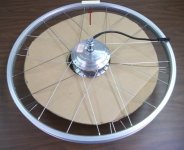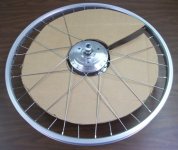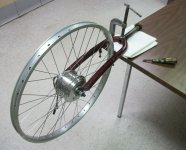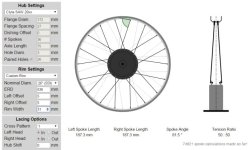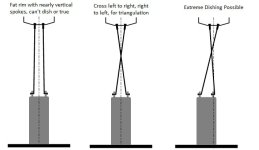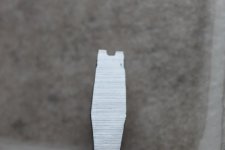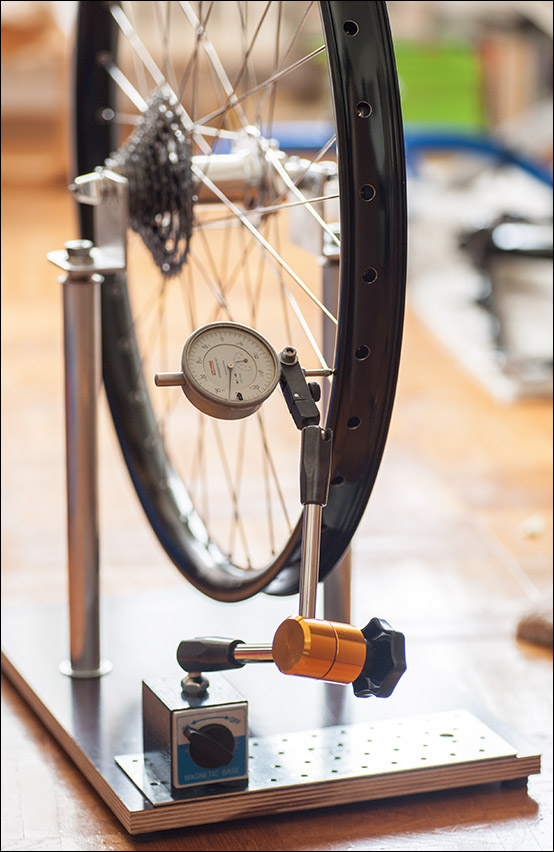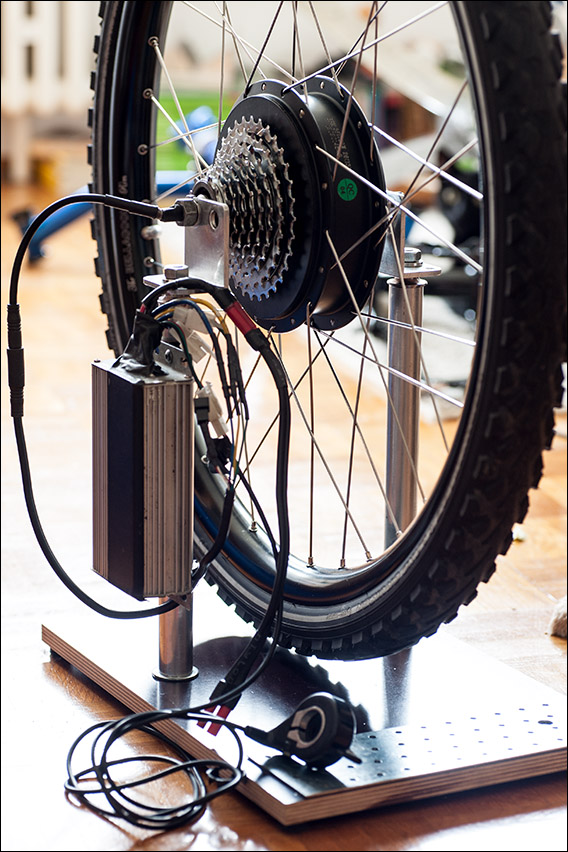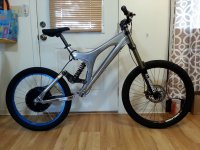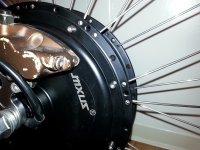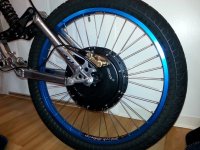I've attached a photo below of the spokes. I guess the spokes are curved exiting the nipples rather than kinked. This is my first attempt at a wheel and my only reference was the original wheel, which had a similar spoke angle, so I may well be guilty of not knowing any better.
The spokes and nipple heads were lubricated with lithium grease. The creaking (only occurred on the very tightest of the spokes) appears to be the spoke repeatedly winding up and releasing.
I guess I should think of the spokes as M2 bolts and exercise some mechanical sympathy considering their diminutive size. Tuning wise, all the spokes "plink" with none going "plonk".
I was pleasantly surprised that the wheel required no truing. I guess I got lucky as on the first check after several rounds of tightening axial runout was ~0.75mm and radial ~0.5mm. So I just went round and evened up the tension, with a couple of subsequent minor tweaks to bring it back to true.
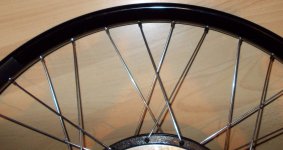
The spokes and nipple heads were lubricated with lithium grease. The creaking (only occurred on the very tightest of the spokes) appears to be the spoke repeatedly winding up and releasing.
I guess I should think of the spokes as M2 bolts and exercise some mechanical sympathy considering their diminutive size. Tuning wise, all the spokes "plink" with none going "plonk".
I was pleasantly surprised that the wheel required no truing. I guess I got lucky as on the first check after several rounds of tightening axial runout was ~0.75mm and radial ~0.5mm. So I just went round and evened up the tension, with a couple of subsequent minor tweaks to bring it back to true.





